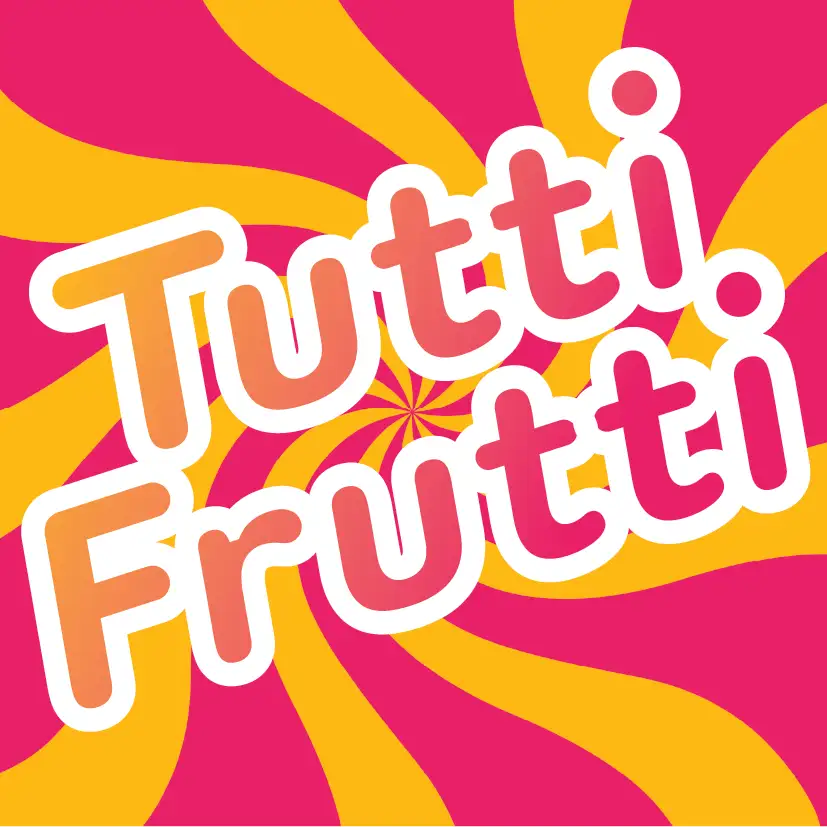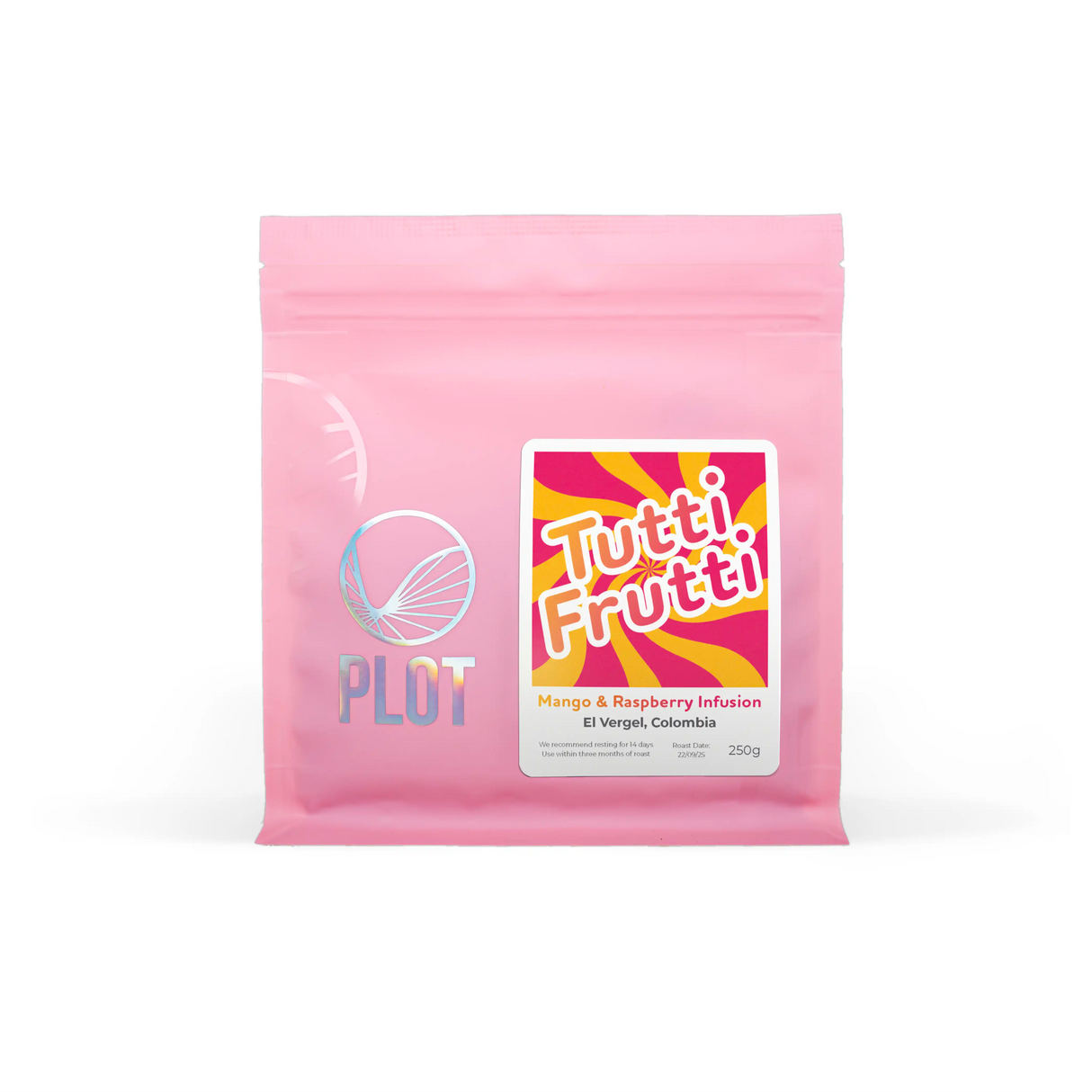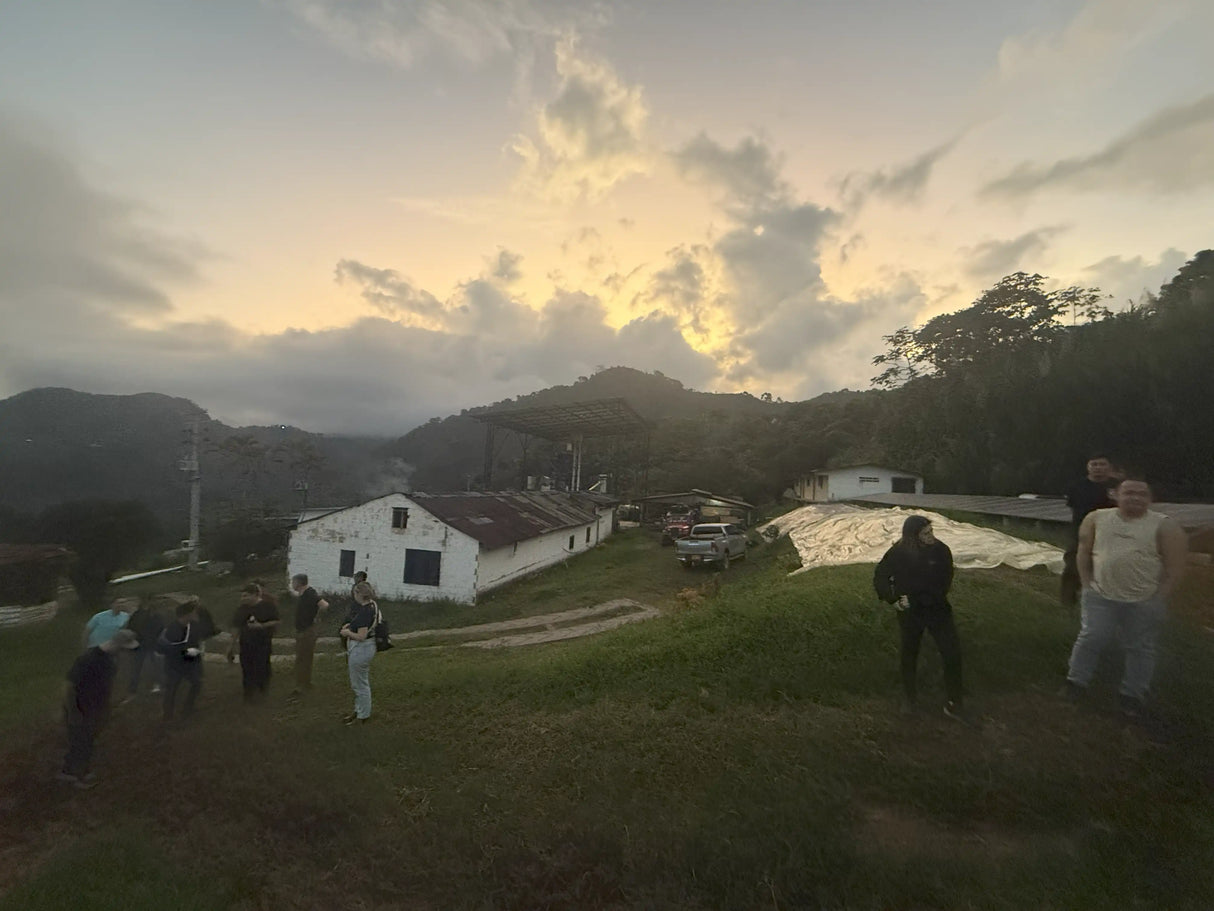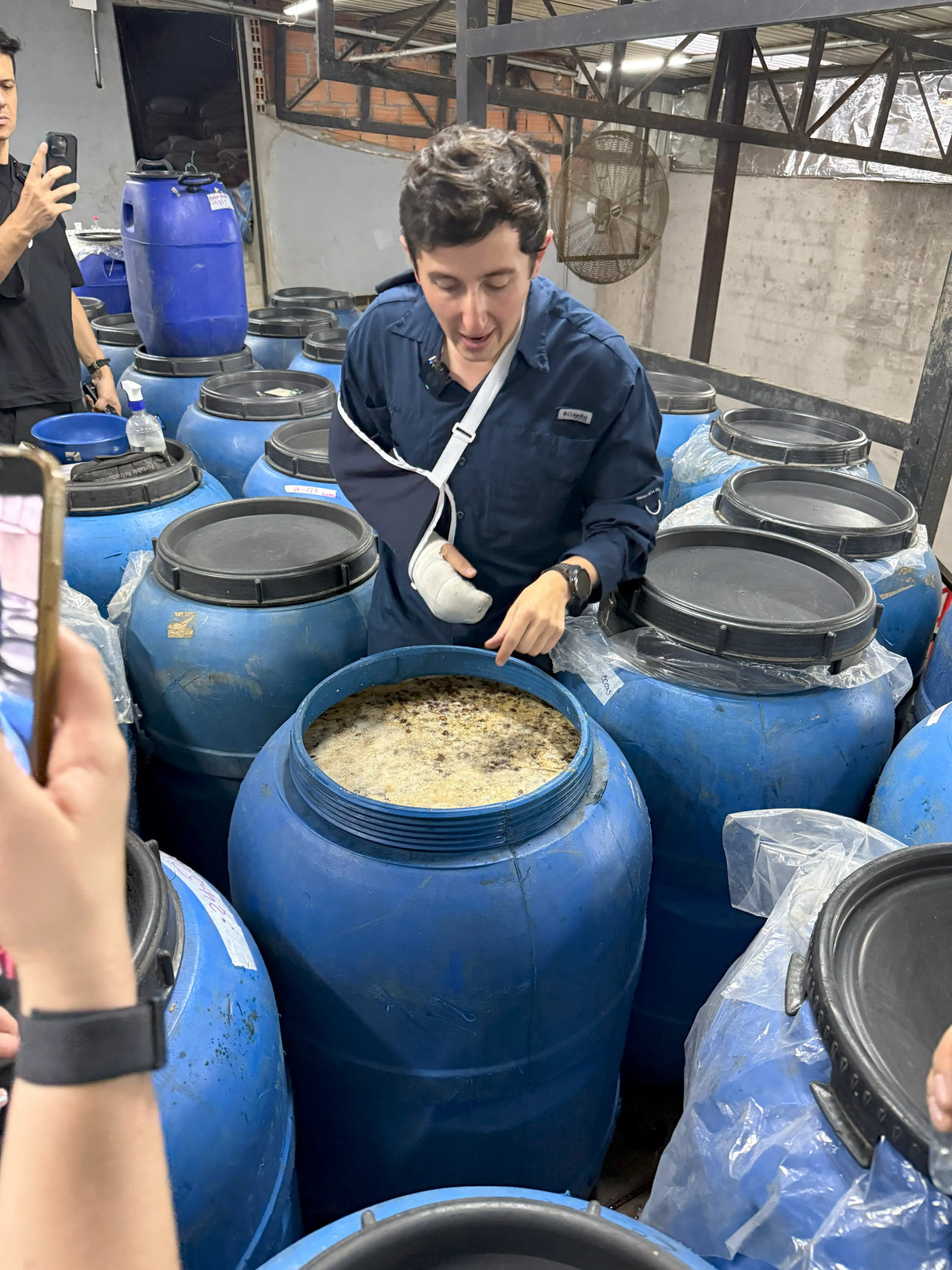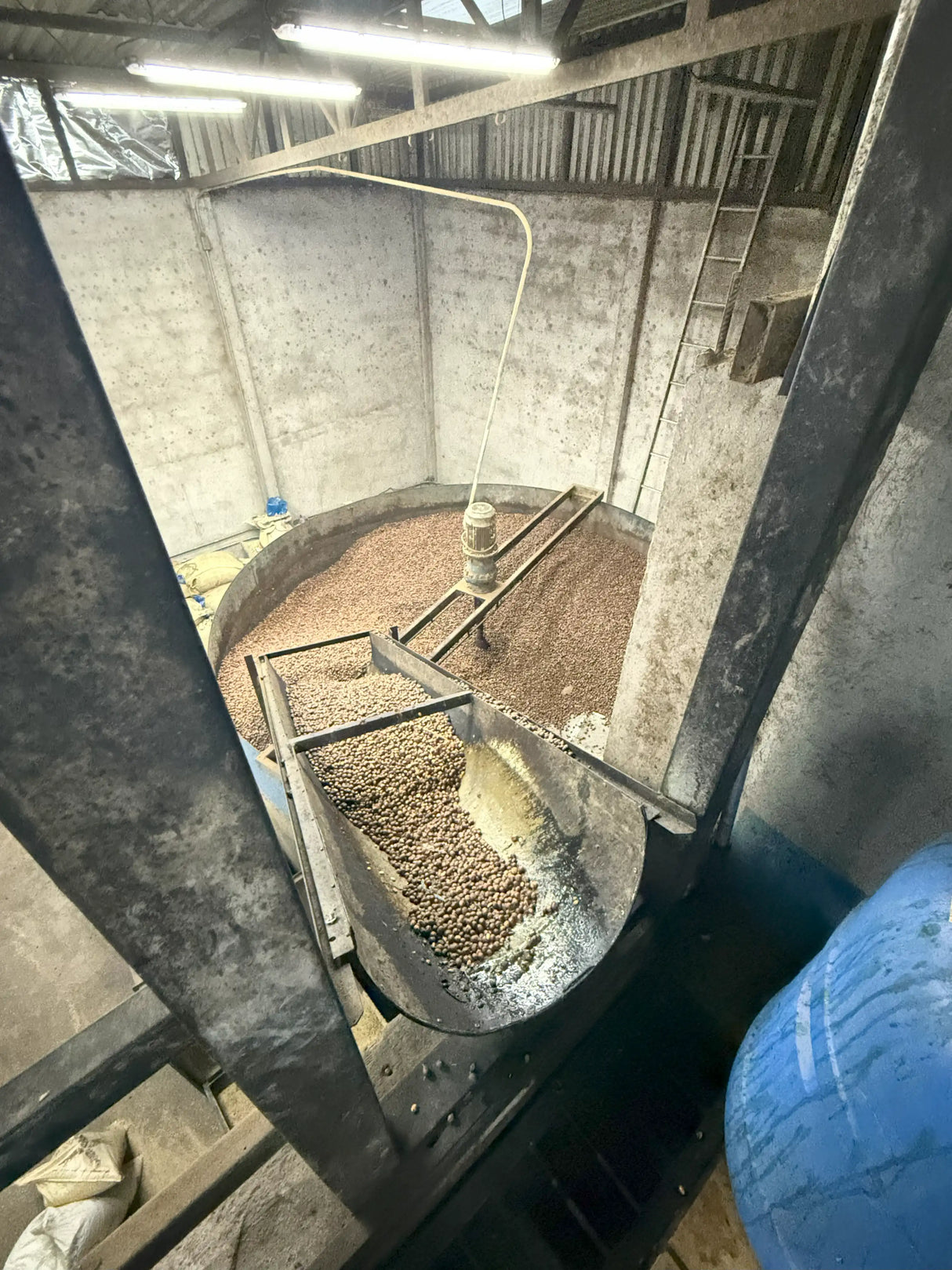TUTTI FRUTTI
£16.50
Unit price
/
Unavailable
TUTTI FRUTTI - 250g is backordered and will ship as soon as it is back in stock.
Lot Info
Lot Info
Producer
Producer
Cultivar
Cultivar
Process
Process
Traceability
Traceability
| Producer | El Vergel |
| Location | Piedra Grande, Tolima, Colombia |
| Elevation | 1,500 - 1,900 masl |
| Cultivar | Caturra, Colombia, Catimor |
| Preparation | Mango and Raspberry Infused |
| Harvest | April - May 2025 |
| Arrival | August 2025 |
| Exporter | Forest Coffee |
| Importer | Forest Coffee |

